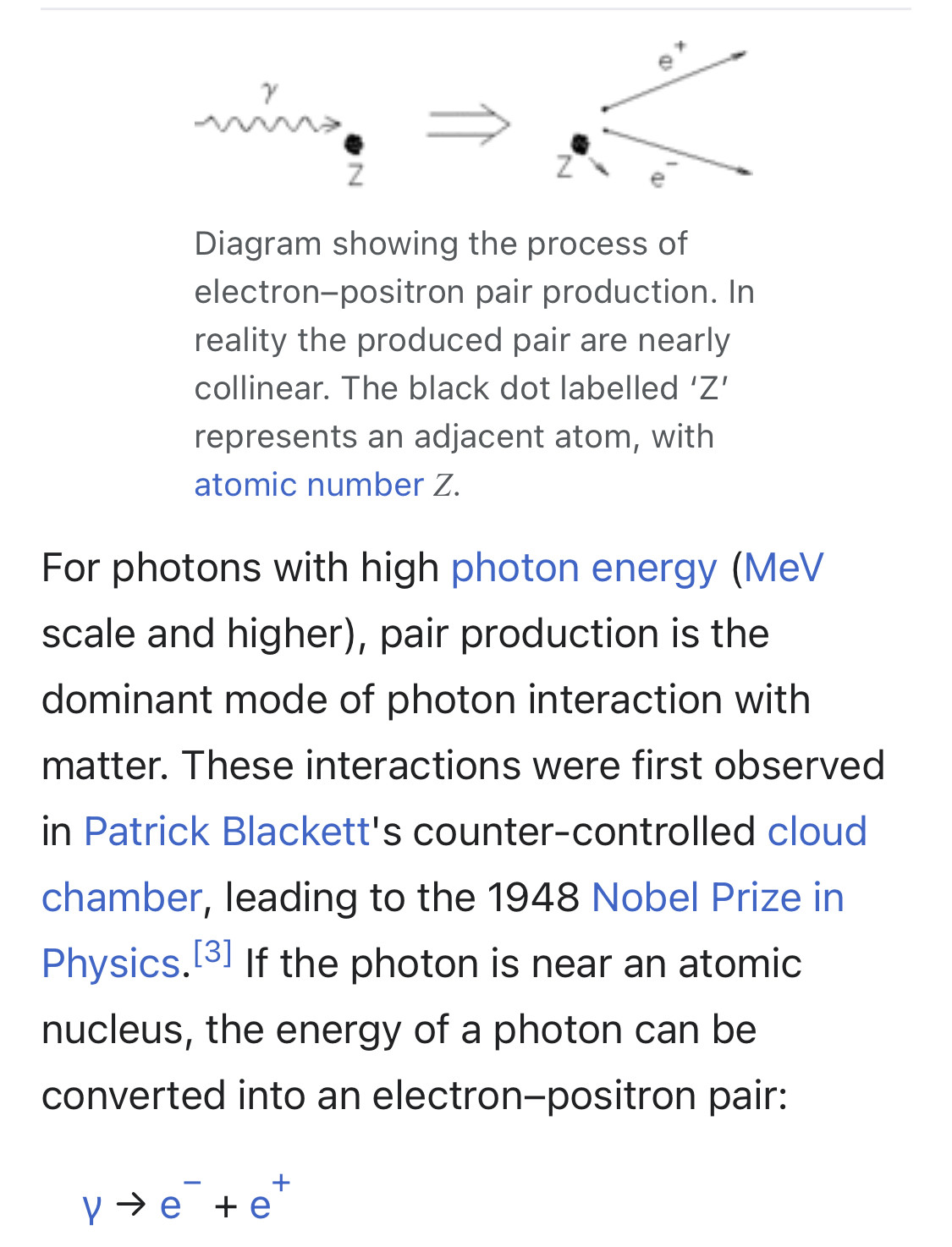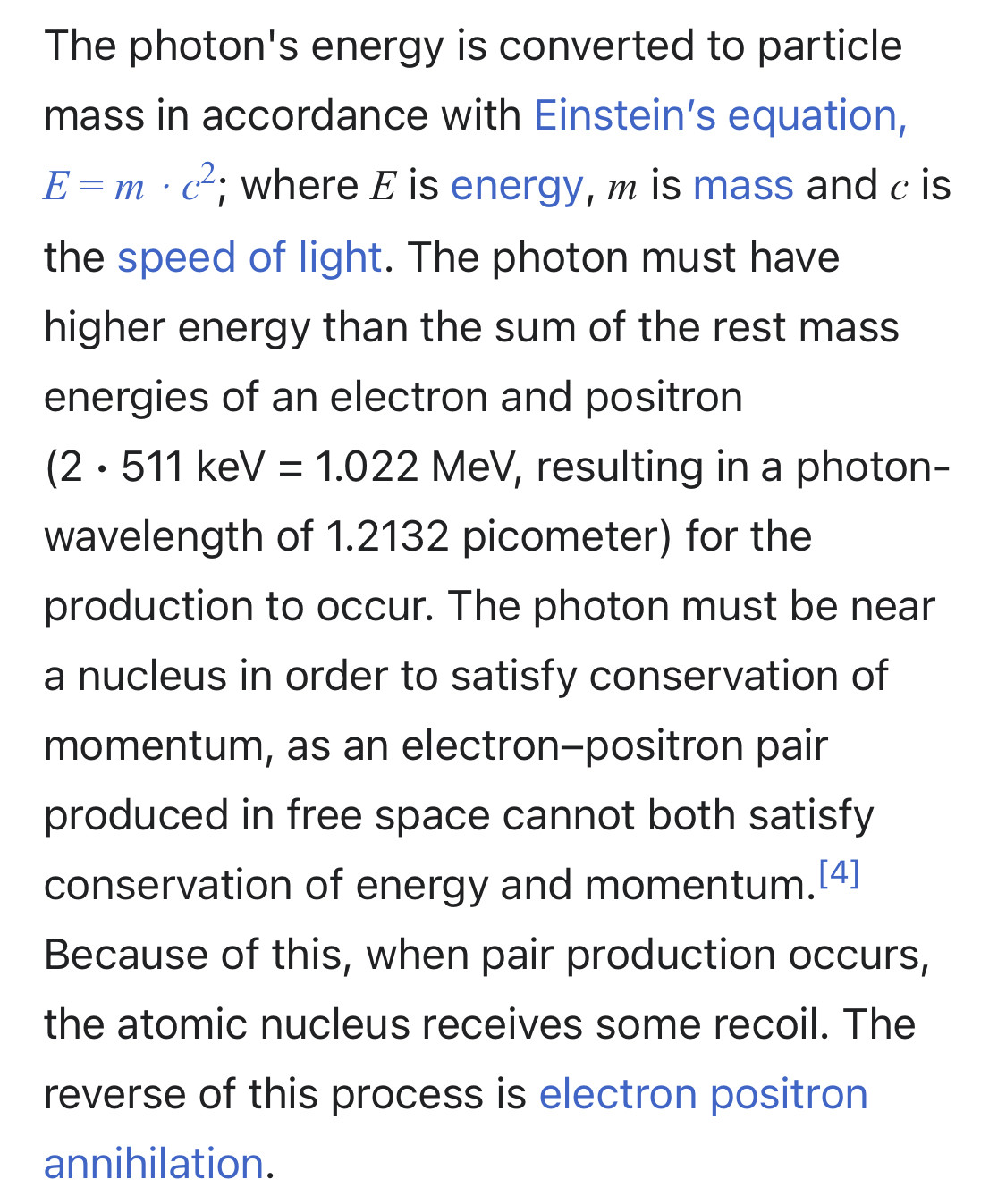if all electrons in the particle are paired, then the substance made of this particle is diamagnetic; if it has unpaired electrons, then the substance is paramagnetic.
if all electrons in the particle are paired, then the substance made of this particle is diamagnetic; if it has unpaired electrons, then the substance is paramagnetic.
if all electrons in the particle are paired, then the substance made of this particle is diamagnetic; if it has unpaired electrons, then the substance is paramagnetic.
Pair production is the creation of a subatomic particle and its antiparticle from a neutral boson. Examples include creating an electron and a positron, a muon and an antimuon, or a proton and an antiproton. Pair production often refers specifically to a photon creating an electron–positron pair near a nucleus. For pair production to occur, the incoming energy of the photon must be above a threshold of at least the total rest mass energy of the two particles, and the situation must conserve both energy and momentum.
However, all other conserved quantum numbers (angular momentum, electric charge, lepton number) of the produced particles must sum to zero – thus the created particles shall have opposite values of each other. For instance, if one particle has electric charge of +1 the other must have electric charge of −1, or if one particle has strangeness of +1 then another one must have strangeness of −1.
Pair production, in physics, formation or materialization of two electrons, one negative and the other positive (positron), from a pulse of electromagnetic energy traveling through matter, usually in the vicinity of an atomic nucleus. Pair production is a direct conversion of radiant energy to matter.
Pair production (PP), like the photoelectric effect, results in the complete attenuation of the incident photon. Pair production can only occur if the incident photon energy is at least 1.022 MeV. As the photon interacts with the strong electric field around the nucleus it undergoes a change of state and is transformed into two particles (essentially creating matter from energy):
one electron
one positron (antimatter equivalent of the electron)


